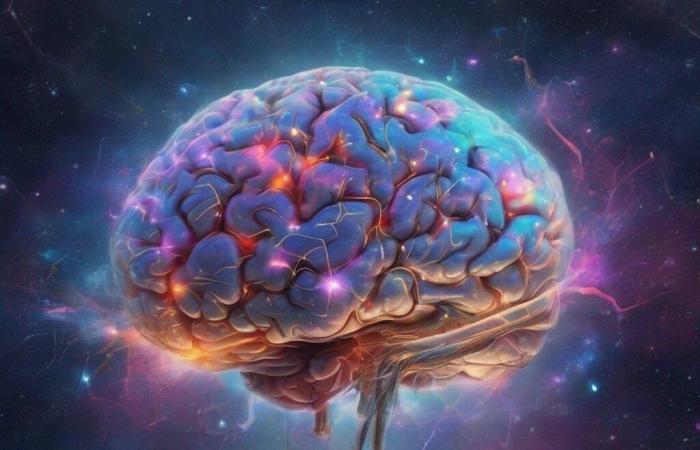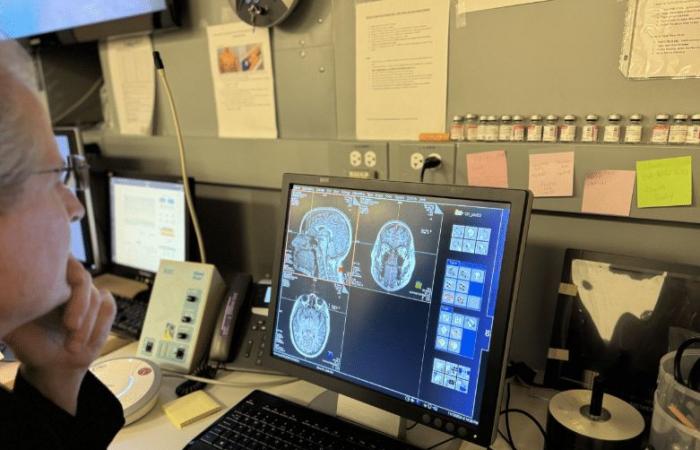⇧ [VIDÉO] You might also like this partner content
A study reveals that our “social brain” is permanently connected to our “reptilian brain” (the amygdala), the part responsible for detecting threats and processing fear. This connection between these two parts of the brain would explain our tendency to constantly (and sometimes excessively) worry about what others might think of us. These findings could have implications for the treatment of psychiatric disorders such as anxiety and depression.
As a social species, we spend a lot of time wondering about the reactions and intentions of others. For example, when leaving a party or a group meeting, we sometimes wonder if we made a good enough impression, if we might have said something annoying or that might have upset someone. one, etc.
These intrusive thoughts are governed by the social brain, or social cognitive network. Studies have shown that the social cognitive network developed disproportionately in the hominid lineage. This suggests that the primate brain developed in this way in response to evolutionary pressures related to complex group dynamics.
« The parts of the brain that allow us to do this are found in regions of the human brain that have recently developed during our evolution, implying that it is a recently developed process “, explains in a statement, Rodrigo Braga, of Northwestern University. “ Essentially, you put yourself in someone else’s mind and make inferences about what that person is thinking when you can’t really know », he adds.
However, this would not fully explain our sometimes disproportionate way of analyzing the thoughts and intentions of others. Previous research suggests that other regions of the brain may be involved in this complex social interaction, including structures that appeared earlier in our evolution such as the amygdala and medial temporal lobe circuits. They also constitute key control centers for social behavior.
The new study by Braga and colleagues shows that the amygdala is permanently connected with the social cognitive network, which could explain our ability to deeply analyze the intentions of others. “ Previous studies have shown co-activation of the amygdala and the social cognitive network, but our study is novel because it shows that communication still takes place », Explains the expert. The research results are detailed in the journal Science
Advances.
A permanent connection between the “social brain” and the amygdala
The amygdala is generally associated with fear processing and threat detection. For example, it is responsible for reactions such as racing heart and sweaty palms in the presence of something frightening. It is also involved in other social behaviors, such as the parenting instinct, the desire to mate, aggression and the notion of social hierarchy.
To examine its interactions with the social brain, the research team invited 6 people to perform functional magnetic resonance imaging (fMRI) of their brains, a non-invasive technique for measuring brain activity by detecting variations in levels oxygen in the blood. This high-resolution technique made it possible to examine previously unobserved details of the social cognitive network.
« One of the most exciting aspects of our study is that we were able to identify regions of the network that we had not been able to see before. », Explains Donna Edmonds, the co-author of the study. “ This was an aspect that had been underestimated before our study, and we were able to achieve this thanks to very high resolution data “. The researchers were even able to replicate the results up to two times for each participant.
Extract from fMRI analyzed as part of the study. © Northwestern University
fMRI analyzes have shown that the social brain is permanently connected to the amygdala at a specific region called the “medial core,” essential for processing social interactions. This would be the first study to demonstrate the consistent connection between the medial core and regions involved in thinking about others. This link would help to modulate the functions of the social brain, in particular by giving it access to the amygdala’s capacity to process emotionally important stimuli.
A potential implication in the treatment of depression and anxiety
Given that overactivity of the amygdala is implicated in anxiety and depression, these new findings could have important implications in the treatment of these disorders. Overactivation of this region of the brain leads to impaired emotional regulation and excessive emotional responses.
See also


Brain magnetic stimulation (TMS), for example, constitutes a potentially promising alternative for treating depression resistant to standard treatments. However, because the amygdala is located deep in the brain (directly behind the eyes), this would involve invasive surgery. Observations from the new study suggest that these types of procedures could be less invasive by applying the stimulations to regions closely connected to the amygdala.
« With this knowledge that the amygdala is connected to other regions of the brain – potentially some that are closer to the skull, which is an easier region to target – one could reach the amygdala of people performing TMS by targeting these other regions », concludes Edmonds.
Video presentation of the study:








